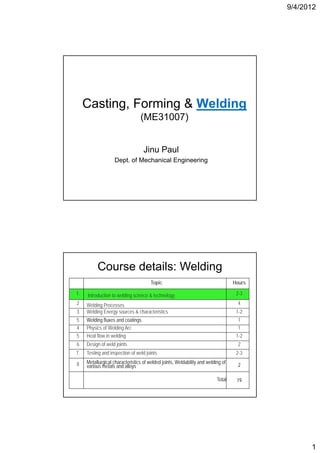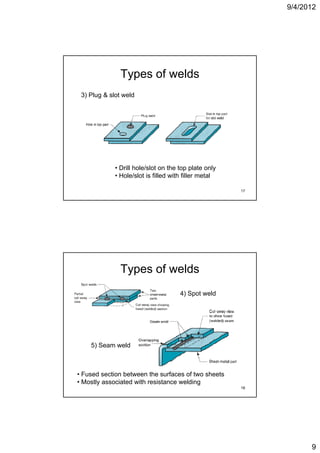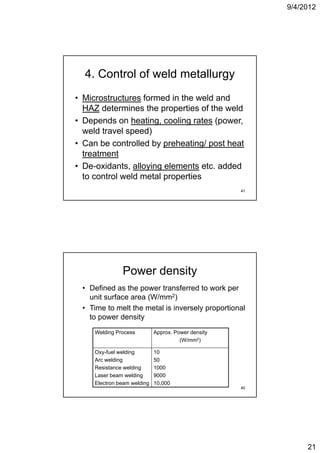- Heating rate and peak temperature
- Cooling rate
- Composition of filler metal
- Pre/post heating of base metal
- Stress relieving heat treatment
Controls the microstructure and properties of the weld.
41
Heat transfer in welding process
- Heat input to the weld is from the energy source
- Heat is conducted away from the weld zone into the base metal
- Heat flow depends on thermal properties of base metal and weld metal
- Heat affected zone experiences thermal cycle due to heat input
- Rapid heating and cooling rates in welding leads to non-equilibrium
microstructures
- Control of heat input and cooling rate is important to control weld
metallurgy






















![9/4/2012
Example 1-Solution
Rate of heat input to the weld bead = 3500 × f1 × f2
= 3500 × 0 7 × 0 5 = 1225 J/s
0.7 0.5
Heat input = Energy used for heating to Tm + Energy used
for melting
1225 = [Cp(Tm-T0) + Lm ] × A × v
1225 = [480(1760 300) + 247 ×103] × 7860 × 20 ×10-6 × v
[480(1760-300) 10 10 6
Travel speed v = 0.0082 m/s = 8.2 mm/s
45
Summary: Lectures 1-3
• Overview of welding, applications,
ad a tages
advantages
• Welded Joint types
• Fusion & Solid state welding
• Elements of weld setup, Heat Balance,
Power density y
• N.B: Characteristics, micro-structural
zones and concept of lattice continuity in
fusion & solid state welding
46
23](https://image.slidesharecdn.com/weldinglectures1-4-121005013434-phpapp02/85/Welding-lectures-1-4-23-320.jpg)








